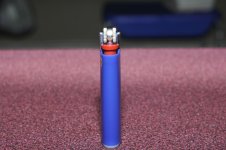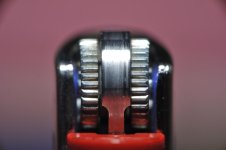MPSanSouci
Senior Member
OK .. for those of you who have been ( somewhat ) following my macro quest for the Mrs. ...
A few weeks back, I bought her the bronze version of the D5200 with the 18-55mm kit lense and the 55-200mm lens. She like to take close up picks of her babies ( birds, dogs, and fish ) and has been using the 18-55mm regularly. Just recently, I purchased her some extension tubes; which she has put on I believe, but not 100% sure
I believe, but not 100% sure  the 20mm and 36mm together with the 18-55mm. Pictures are coming out great .. the autofocus feature does not work with the extension tubes, so she has been manually focusing under 'Aperture Priority'.
the 20mm and 36mm together with the 18-55mm. Pictures are coming out great .. the autofocus feature does not work with the extension tubes, so she has been manually focusing under 'Aperture Priority'.
She has been, like me, doing some reading and came across the concept of 'Reverse Mounting your Lens'. It is suppose to get you extremely close to your 'macro' subject. My question is .. 'How do you reverse mount a lens?'
I look at both side of the bayonets .. first the lens then the camera and cannot, for the life of me, figure out how this is done? Are 'prime' lenses that much different, or is there a special adapter you need in order to reverse mount any lens?
For the moderators .. I'm placing this question under the D5200 section since it deals with our D5200s. If it does not belong here, please feel free to move it to the proper location and advise me accordingly.
As always .. eaceful:
eaceful:
Michael
A few weeks back, I bought her the bronze version of the D5200 with the 18-55mm kit lense and the 55-200mm lens. She like to take close up picks of her babies ( birds, dogs, and fish ) and has been using the 18-55mm regularly. Just recently, I purchased her some extension tubes; which she has put on
She has been, like me, doing some reading and came across the concept of 'Reverse Mounting your Lens'. It is suppose to get you extremely close to your 'macro' subject. My question is .. 'How do you reverse mount a lens?'
I look at both side of the bayonets .. first the lens then the camera and cannot, for the life of me, figure out how this is done? Are 'prime' lenses that much different, or is there a special adapter you need in order to reverse mount any lens?
For the moderators .. I'm placing this question under the D5200 section since it deals with our D5200s. If it does not belong here, please feel free to move it to the proper location and advise me accordingly.
As always ..
Michael



